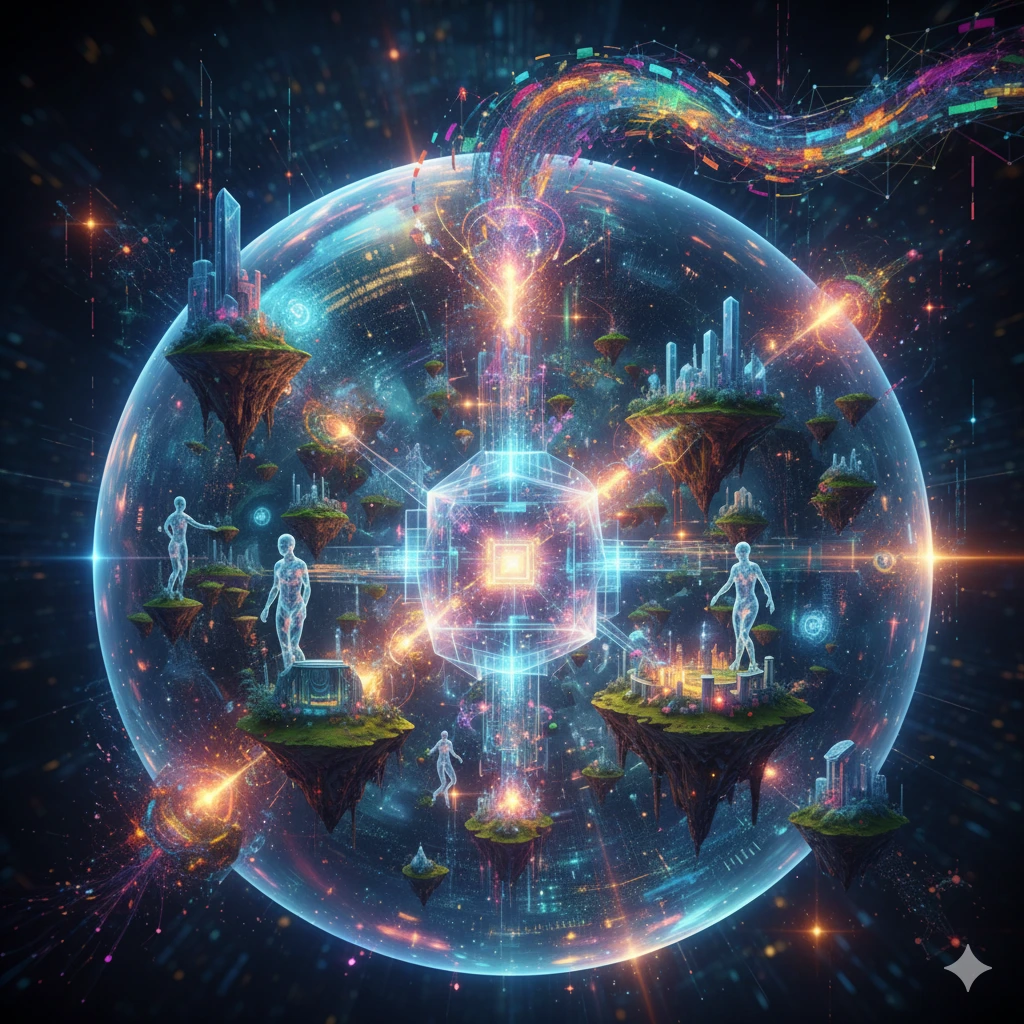How Generative AI is Crafting a New Reality in Virtual Worlds
Virtual Reality has promised complete immersion in digital worlds for years. The technology should let people explore fantastical landscapes, simulate complex scenarios, experience presence in synthetic environments.
Except VR keeps falling short. Creating detailed, dynamic virtual worlds takes too much time and money. Most VR environments feel static and repetitive. Users notice the same assets repeated everywhere after 30 minutes of exploration. NPCs cycle through three voice lines. Nothing reacts unless it was explicitly programmed to.
Generative AI is fixing these problems, though not overnight. The technology automates content creation in ways that manual development can't match. Virtual worlds are getting richer and more believable because AI models can generate assets, characters, and entire environments at scale.
What is Virtual Reality and How Can AI Enhance VR Experience?
Virtual Reality uses headsets, controllers, and sensors to immerse users in computer-generated 3D environments. The goal is presence. Users should feel like they're inside the virtual world, interacting naturally instead of observing from outside.
Building these worlds has required enormous manual effort. Artists and developers had to craft every 3D model, every texture, every line of NPC dialogue individually.
Generative AI changes the economics. Instead of building everything manually, AI creates content on demand or helps developers generate large quantities of unique assets quickly.
The technology enhances VR through several mechanisms:
- It automates content creation, cutting time and cost substantially.
- It increases scale and variety because procedurally generating assets is faster than hand-crafting them.
- It adds dynamic intelligence by powering NPC behaviors that actually adapt.
- It enables personalization by tailoring experiences to individual users in real time.
How Can Generative AI Be Used in Virtual Reality Applications?
Generative AI applications in VR cover both development workflows and end-user experiences.
Dynamic 3D Environment Generation
Building large, detailed 3D environments manually requires substantial resources. Teams can spend months on a single environment. Generative AI models for VR (GANs, VAEs, and similar architectures) automate significant portions of this work.
Developers give high-level instructions. "Create a dense jungle landscape." "Generate a futuristic cityscape." The AI produces terrain, structures, textures that match those parameters. This enables potentially infinite worlds where exploration doesn't hit artificial boundaries after 20 minutes.
Realistic 3D Model Creation
Generative AI also creates individual objects. Furniture, props, vehicles, flora. Everything that populates a VR world beyond the landscape itself.
Text-to-3D generation is particularly useful here. Developers (or another AI!) can describe objects in natural language and get corresponding 3D models. This accelerates asset creation and enables genuine diversity. Users stop noticing the same chair in every building when asset generation is this fast.
Adaptive and Personalized Experiences
VR experiences can adapt to individual users in real time through Generative AI. Based on tracked actions, gaze patterns, demonstrated skill levels, even biometric feedback in some cases.
This creates engagement that feels unique. The experience responds to you specifically instead of following the same predetermined path every user gets.
How Can Generative AI Help NPCs Seem More Realistic?
NPCs have been the weakest link in VR immersion. They follow rigid scripts, repeat limited dialogue, exhibit predictable behaviors.
Large Language Models fundamentally change this. LLMs can power NPC dialogue systems that enable actual conversations. Unscripted, context-aware interactions instead of cycling through predetermined responses. NPCs can now react dynamically to what users say and do, remember past interactions, and have distinct personalities that persist.
Beyond dialogue, AI generates unique character appearances, animations, emergent behaviors. NPCs react to environmental changes. They interact with each other in ways that weren't explicitly programmed. They pursue objectives within the virtual world. The environment starts feeling inhabited instead of populated by obvious automatons.
Generative AI Models Powering VR: A Quick Overview
Generative Adversarial Networks (GANs)
Two neural networks compete. A generator creates synthetic data. A discriminator tries to distinguish synthetic from real. This produces realistic outputs good for textures, 2D assets, 3D geometry.
Variational Autoencoders (VAEs)
These learn compressed representations of input data and generate new content by sampling from that space. Useful for creating variations and interpolating between different object types.
Diffusion Models
Newer architecture achieving strong results in image generation. Being adapted for 3D models and textures. They add noise progressively then learn to reverse it.
Large Language Models (LLMs)
Critical for NPC dialogue, natural language command interpretation, potentially narrative generation.
Deep Convolutional Networks (DCNs)
Foundational architecture used inside many generative models for processing visual data.
Read Also: Immersive Journeys: Exploring the World with AR and VR Technology
What Are Some Benefits of Generative AI?
Accelerated Development: Time and cost for creating VR content drops substantially. Projects that took months now take weeks.
Enhanced Realism: More detailed, varied environments. Characters that exhibit intelligent behaviors instead of obviously following scripts.
Increased Scale: Much larger, more complex virtual environments become feasible. Manual development couldn't produce this at any reasonable cost.
Dynamic Personalization: Experiences adapt to individual users. Difficulty adjusts. Content changes based on behavior patterns.
Improved Replayability: Procedural generation creates different experiences across multiple sessions instead of identical replays.
Can Generative AI Models Generate Content That is Not Accurate or Realistic?
Yes. This is a significant problem that doesn't get discussed enough in marketing materials.
Quality Control: Generated assets don't always meet quality standards. AI produces models with problematic geometry, textures that don't match the intended style, layouts that make no sense. Human oversight is necessary, which means the workflow isn't fully automated.
Control and Predictability: Guiding AI to generate exactly what's needed while leveraging its creative potential requires expertise most development teams don't have yet. The learning curve is steep.
Computational Requirements: Real-time generation of complex assets demands serious computational power. This limits deployment on consumer hardware, which matters for VR adoption since high-end hardware requirements are already a barrier.
Bias Issues: AI models trained on biased datasets generate biased content. Character appearances and behaviors can be problematic. Training data curation and output filtering help but don't eliminate the problem entirely.
Repetition: Models can fall into repetitive patterns despite their theoretical capacity for variety. Human intervention is still needed to maintain genuine diversity.
Crafting the Future of Reality
Generative AI isn't just another development tool. It addresses fundamental limitations that have constrained VR since the beginning.
Manual content creation was the bottleneck limiting scale, variety, responsiveness. Generative AI removes that bottleneck by automating asset generation, powering intelligent NPCs, creating environments that actually react to users.
As these models evolve (faster, more controllable, higher fidelity output), the gap between VR's promises and VR's delivery keeps narrowing. The technology enables experiences substantially larger, more dynamic, more immersive than manual development could feasibly produce.
Click here to learn more about how KiXR is using VR and generative AI to create interactive experiences for businesses.
Kavita has been adept at execution across start-ups since 2004. At KiKsAR Technologies, focusing on creating real life like shopping experiences for apparel and wearable accessories using AI, AR and 3D modeling


